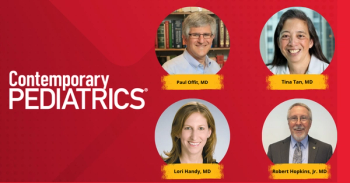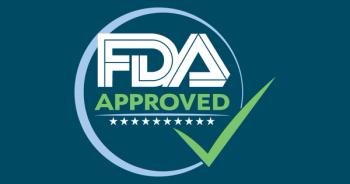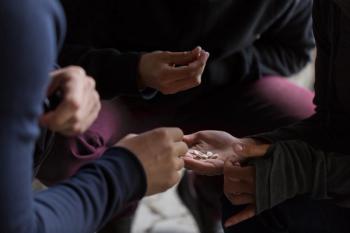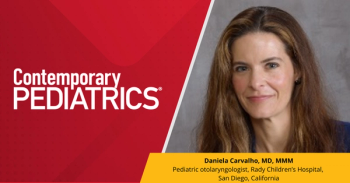Key takeaways:
- At the 2025 AAP National Conference, Abby Nerlinger, MD, emphasized how pediatricians can better support military-connected children facing unique environmental and social challenges tied to parental deployment, relocation, and exposure risks.
- Nerlinger outlined key resources from the AAP and national organizations to help pediatricians identify and address environmental health concerns in this population.
- She encouraged community-level advocacy to improve housing, reduce environmental exposures, and promote healthier living conditions for all children—military and civilian alike.
As we continue to highlight the important updates that have come out of the 2025 American Academy of Pediatrics (AAP) National Conference & Exhibition, Abby Nerlinger, MD, pediatric intensivist, Nemours Children’s Hospital, Delaware, took part in a Q&A to highlight her session, "What’s Good for Military Children is Good for American Children."1
According to the AAP, children in US military families share both common experiences and unique challenges—such as parental deployment and often relocation—meaning these children often are cared for in both military and civilian medical practices.2
In addition to the interview with Nerlinger below, the AAP has several resources and recommendations for caring for children in military families.
Q&A: How can pediatric health care providers take care of military-connected children?
Contemporary Pediatrics:
What unique environmental exposures do military children face compared with the general pediatric population, and how can community pediatricians better recognize and address these needs?
Abby Nerlinger, MD:
Children are more susceptible to health impacts from environmental hazards due to fragile stages of development, specific behaviors that can increase exposure risk, and the cumulative impact of exposures across the life course. Within this, military-connected children living both on base and in adjacent communities can be impacted by specific environmental exposures related to both military operations and unique parental occupational exposures. Military operations associated environmental exposures can impact both pregnant women and children and include metal emissions, PFAS (per- and polyfluoroalkyl substances) contamination of water supplies through the use of firefighting foams, and particulate exposure through the use of burn pits, especially internationally.
Military industrial processes can also lead to hazardous contamination of on-base and off-base adjacent communities, leading to the Environmental Protection Agency designation as a National Priority List Superfund Sites. A significant portion of current EPA-designated Superfund Sites are current or former Department of Defense installations, with a significant economic cleanup backlog for contaminated sites. Parental occupational exposures include industrial solvents, aerosols such as those used for vehicular painting, and radiation. Military-connected children also face common social drivers that can compound with environmental exposures, such as substandard housing conditions and food insecurity. Such factors can also increase the susceptibility of families in the face of climate change, especially if they have limited resources for adaptation to impacts such as flooding, extreme heat, and worsened air pollution.
The methods and steps for assisting families with resources to address these social drivers are different from our typical pattern of community referrals and are often done in partnership with the military base and leadership. Occupational medicine clinics on bases can also act as a resource to identify parental occupational exposures that may be impacting child health.
Contemporary Pediatrics:
What targeted and timely resources are currently available to assist pediatricians caring for military children with concerns for environmental exposures?
Nerlinger:
There are a variety of resources available to assist pediatricians caring for military-connected children with concerns for environmental exposures. I like to say that "if we don't ask, then we don't know." Many times, families may have concerns about environmental exposures but may not be sure who to ask or how to go about addressing these concerns. So it is important that we are asking about this as part of pediatric primary care visits, especially for military-connected children.
The AAP Council on Environmental Health and Climate Change (AAP COEHCC) and its members have authored multiple Policy Statements and Technical Reports on topics relevant to children's environmental exposures. One of the most recent "Environmental Issues in Global Pediatric Health" provides background and guidance on environmental exposures relevant to children both nationally and internationally. It offers resources for practicing pediatricians to guide history taking and anticipatory guidance. There are also multiple articles on HealthyChildren.org on such topics as pollution, lead, extreme heat, climate change, housing, and heavy metals in foods. The AAP COEHCC also sponsors the AAP policy manual "Pediatric Environmental Health," also known as the "Green Book," which provides an in-depth description of environmental exposures, their health effects in children, and examples of common questions pediatricians may face in the clinical setting.
Pediatric Environmental Health Specialty Units are regional units with pediatric environmental medicine specialists that can be used as a resource by clinicians, community members, and policymakers. The National Environmental Education Foundation has created a Pediatric Environmental History Screening Form, with additional questions to address specific exposure concerns in housing, the indoor home environment, the outdoor environment, toxic chemical exposures, and parental occupations and hobbies.
In spring 2026, the AAP will also be releasing the book, “Pediatrics for Underserved Populations” (Eds Klass, McFadden, and Costello) that contains a chapter on identifying, understanding, and addressing environmental exposures impacting children in underserved communities.
Contemporary Pediatrics:
How can pediatricians at the community level engage in advocacy to reduce environmental exposures for both military children and all children?
Nerlinger:
Military-connected families have limits and restrictions to engagement in the policy process, so it is important for pediatricians at the community level to engage in advocacy to reduce environmental exposures for both military children and all children. Actions can be considered at the practice, community, state, and federal levels. Pediatricians can advocate with clinic and hospital leadership to bring attention to the impact of environmental exposures on children's health, and provide education to colleagues and trainees. Pediatricians can advocate on behalf of individual families with base leadership to help improve housing conditions on base, which is often owned and operated by private companies. Similarly, pediatricians can advocate for families facing substandard housing conditions off-base by partnering with legal aid attorneys or the public health department to ensure that rental and low-income subsidized housing is meeting municipality housing code standards. Novel community partnerships and referrals can be considered to provide services such as HEPA filters, air conditioners, and water filters to help improve resiliency in the face of environmental toxins and high heat days. Pediatricians can partner with state and federal policymakers to share stories of how children in their communities, both military and non-military connected, are impacted by environmental exposures. This can be done in conjunction with State AAP Chapters, the AAP Committee on Federal Government Affairs and State Government Affairs, and the AAP Council on Environmental Health and Climate Change. Part of this advocacy also includes considering our own carbon footprint, both at home and in clinical care, which can be reduced by practicing high-value care in clinical encounters.
Contemporary Pediatrics:
In what ways does reducing environmental exposures for children in all settings (including military) impact pediatric health outcomes across the country?
Nerlinger:
Creating healthy conditions in all environments in which children live, play, work, and attend school allows children to thrive and become healthy adults. Investing in prevention during childhood is important to improve health outcomes across the life course. As pediatricians, we strive to improve health outcomes for all children, and sometimes this means going beyond the clinic as advocates, educators, and researchers to address non-medical factors such as environmental exposures that may contribute to adverse health outcomes. Reducing environmental exposures also includes increasing access to safe nature and green spaces, which has been connected to improved health outcomes for such conditions as obesity, cardiovascular disease, and mental health.
For more coverage of the 2025 AAP National Conference & Exhibition, click here.
References:
- Myles D, Vereen RJ, Nerlinger A. Section on Uniformed Services Program
What’s Good for Military Children is Good for American Children. Presented at: American Academy of Pediatrics 2025 National Conference & Exhibition. September 26-30, 2025. Denver, Colorado. - Military families and deployment. American Academy of Pediatrics. Updated June 16, 2025. Accessed October 23, 2025. https://www.aap.org/en/patient-care/military-families-and-deployment








